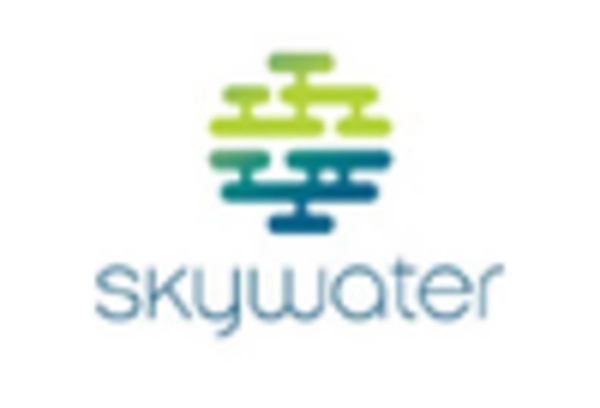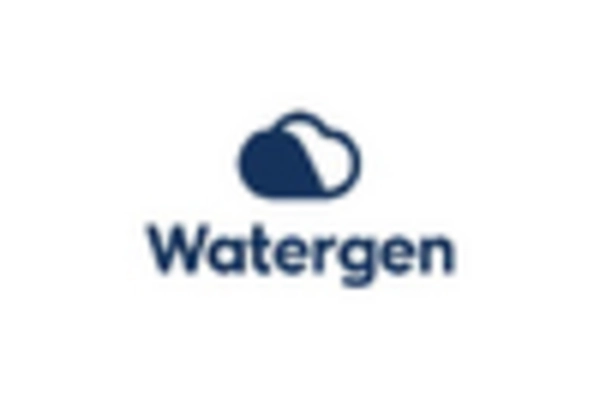The atmospheric water-generator market is currently characterized by a dynamic competitive landscape, driven by increasing demand for sustainable water solutions and technological advancements. Key players such as Watergen (IL), Skywater (US), and Source Hydropanel (US) are at the forefront, each adopting distinct strategies to enhance their market presence. Watergen (IL) focuses on innovation, particularly in developing energy-efficient systems that can operate in diverse climates, while Skywater (US) emphasizes regional expansion, targeting areas with acute water scarcity. Source Hydropanel (US) leverages partnerships with local governments to promote its technology, which integrates solar energy for water generation, thereby aligning with sustainability goals. Collectively, these strategies contribute to a competitive environment that prioritizes technological innovation and regional adaptability.
In terms of business tactics, companies are increasingly localizing manufacturing to reduce costs and enhance supply chain efficiency. The market structure appears moderately fragmented, with several players vying for market share, yet the influence of major companies is palpable. This fragmentation allows for niche players to emerge, focusing on specific regional needs or technological advancements, thereby enriching the competitive dynamics.
In October 2025, Watergen (IL) announced a partnership with a leading renewable energy firm to develop a hybrid atmospheric water generation system that utilizes both solar and wind energy. This strategic move is likely to enhance Watergen's product offerings, positioning the company as a pioneer in sustainable water solutions. The integration of renewable energy sources not only aligns with global sustainability trends but also addresses the growing consumer demand for eco-friendly technologies.
In September 2025, Skywater (US) launched a new initiative aimed at deploying its atmospheric water generators in underserved communities across the southwestern US. This initiative underscores Skywater's commitment to social responsibility and market expansion, potentially increasing its customer base while addressing critical water shortages. By focusing on community engagement, Skywater may enhance its brand reputation and foster long-term customer loyalty.
In August 2025, Source Hydropanel (US) secured a significant investment from a venture capital firm to accelerate the development of its next-generation water generation technology. This funding is expected to facilitate research and development efforts, allowing Source Hydropanel to refine its product and expand its market reach. The influx of capital could also enable the company to explore international markets, thereby diversifying its operational footprint.
As of November 2025, current competitive trends in the atmospheric water-generator market include a pronounced shift towards digitalization, sustainability, and the integration of artificial intelligence in operational processes. Strategic alliances are increasingly shaping the landscape, as companies recognize the value of collaboration in enhancing technological capabilities. Looking ahead, competitive differentiation is likely to evolve from traditional price-based competition to a focus on innovation, technological advancements, and supply chain reliability. This shift may redefine market dynamics, compelling companies to invest in cutting-edge solutions that meet the growing demand for sustainable water resources.

















Leave a Comment